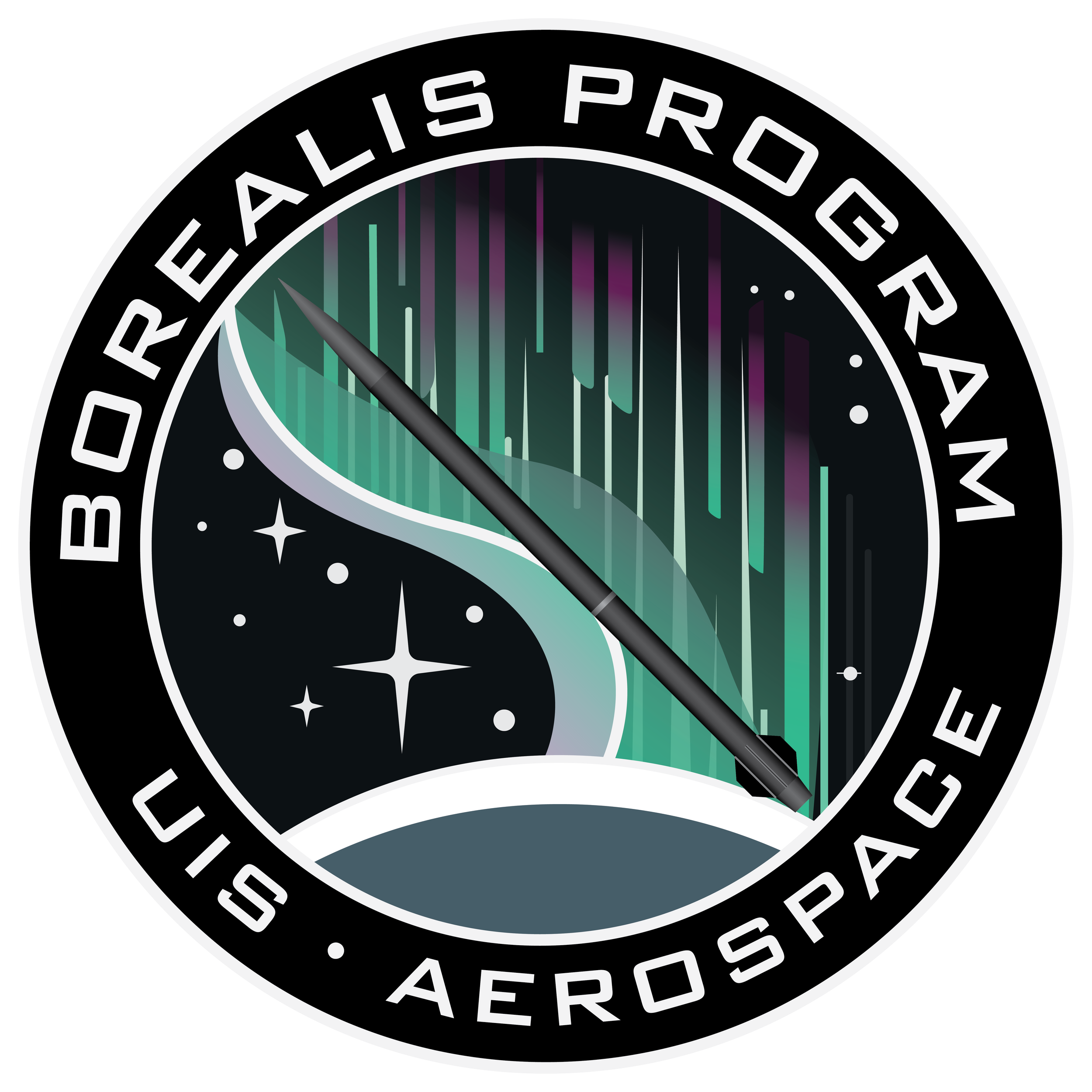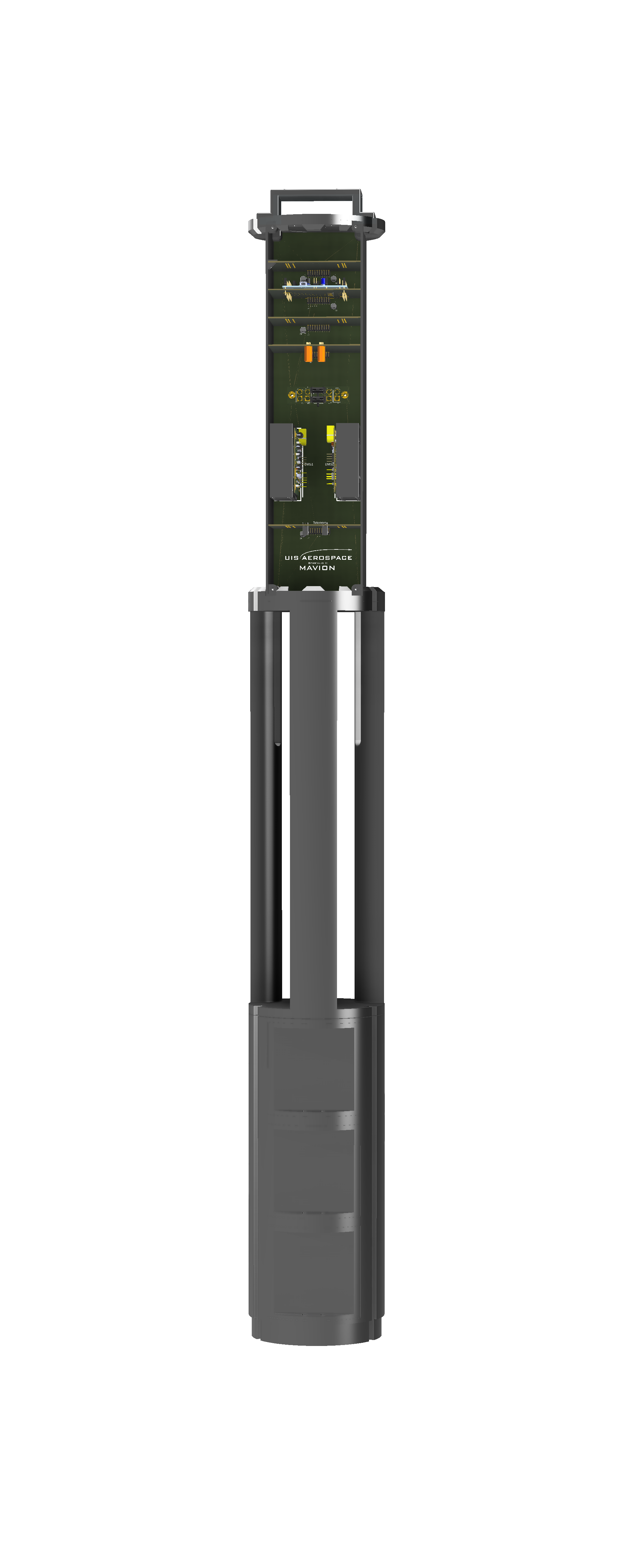BOREALIS 2
Technical details:
Height: 3.9 m
Diameter: 155 mm
Top speed: 800 km/h
Thrust: 3 kN
Target Altitude: 3300 m
Max Altitude: ~ 7000 m
Materials: Carbon, aluminum, ABS
Fuel: Solid
Motor: Pro98
Lighter, more powerful, and stronger. Borealis 2 builds upon the successes of its predecessor. The parachutes have been moved to the nose of the rocket for simplicity, and a more reliable parachute system has been developed. The rocket features a radax joint on the aft airframe providing a more robust engine retention system, and safer conditions for our operators during launch.
Bulkhead & Coupler
More compact and more robust avionics collect in-flight data and communications, deploying the parachutes at the right time.
Electronics Bay
Features the onboard avionics, a triple antenna configuration and added room which allows for three scientific and educational payloads.
MAVION (Main Avionics Unit)
Features the PCB’s developed in-house by UiS Aerospace. Complete with its own power supply, the avionics unit houses the flight computer which allows the rocket to detect the flight apogee and trigger the recovery system. The telemetry system allows for two-way communication with the rocket for the entirety of the flight.
Aft Airframe
Holds the motor in place while fins stabilise the rocket during flight ensuring nominal flight trajectory.
“Atlas” Radax Thrust Plate
Overdimensioned to withstand a couple of tons “just in case!”. The Atlas keeps the motor in place and ensures that the motor does not turn the electronics to dust with an unintentional visit farther up the rocket.
Ribs
Run the length of the rocket, providing additional structural integrity and bringing everything together.








